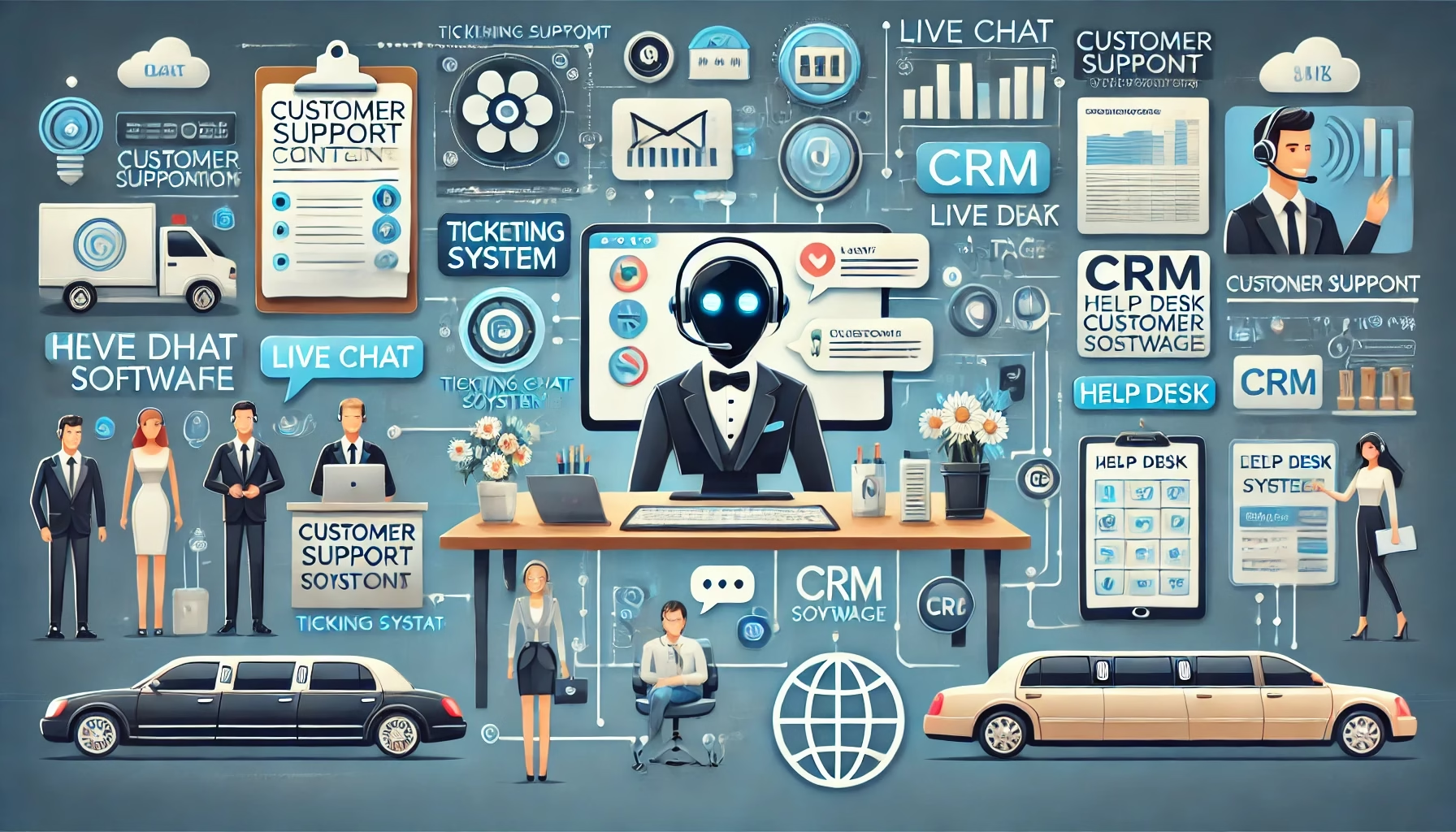Introduction
Dispatchers play a vital role in managing transportation logistics, ensuring timely coordination between drivers, clients, and service providers. Whether in limousine services or trucking, the efficiency of dispatchers determines the overall operational success. However, managing dispatcher workload effectively is often challenging due to high-pressure tasks, unpredictable schedules, and communication bottlenecks.
This article delves into key strategies to balance dispatcher workload efficiently, reduce stress, and improve productivity. We will explore the common challenges in dispatch operations and practical solutions to enhance performance. By implementing these techniques, businesses can optimize dispatcher efficiency and improve customer service.
1. Identifying Dispatcher Workload Challenges
The Issue
Dispatchers handle a wide range of responsibilities, from tracking vehicles and scheduling drivers to resolving customer inquiries. Without proper workload management, dispatchers often experience burnout, errors in communication, and operational inefficiencies. Limousine and logistics companies must address these challenges to maintain service quality.
Solutions
- Assess Dispatcher Workload Regularly
Conduct routine workload assessments to understand how tasks are distributed among dispatchers. This helps identify workload imbalances and prevent excessive stress. - Implement Automation Tools
Utilize software solutions like GPS tracking, automated scheduling, and AI-driven dispatch management to reduce manual workload and streamline operations. - Improve Task Delegation
Assign responsibilities strategically, ensuring that tasks are divided evenly among dispatchers. This prevents work overload and enhances overall efficiency.
2. Enhancing Communication Between Dispatchers and Drivers
The Issue
Miscommunication between dispatchers and drivers can lead to delays, missed pickups, and customer dissatisfaction. Without a structured communication system, operations become chaotic.
Solutions
- Use a Centralized Communication Platform
Implement a real-time communication system like dispatch software with instant messaging and GPS tracking to ensure clear and timely communication. - Standardize Communication Protocols
Develop clear guidelines on how dispatchers and drivers should communicate, ensuring consistency in updates and instructions. - Encourage Feedback Loops
Regularly collect feedback from drivers and dispatchers to identify communication gaps and improve interactions.
3. Balancing Workload with Shift Scheduling
The Issue
Overworked dispatchers struggle to stay productive, leading to decision fatigue and operational errors. Poor shift management exacerbates workload imbalances.
Solutions
- Optimize Shift Rotation
Implement fair scheduling policies that rotate shifts effectively, ensuring that no dispatcher is overburdened. - Introduce Flexible Work Schedules
Allow remote or hybrid work options when possible to improve dispatcher morale and efficiency. - Monitor Dispatcher Performance
Track workload distribution through analytics tools and adjust schedules based on real-time data.
4. Utilizing Dispatch Software for Efficiency
The Issue
Manual dispatching processes lead to inefficiencies, slow response times, and increased human errors.
Solutions
- Invest in Advanced Dispatch Software
Implement software solutions that automate route optimization, driver assignments, and real-time tracking. - Train Dispatchers on Software Usage
Provide regular training on using dispatch management systems effectively to maximize efficiency. - Integrate AI and Predictive Analytics
Use AI-driven insights to forecast demand and allocate resources proactively.
5. Reducing Stress and Burnout Among Dispatchers
The Issue
High-pressure environments can lead to dispatcher burnout, affecting decision-making and overall job satisfaction.
Solutions
- Promote a Healthy Work Environment
Encourage breaks, wellness programs, and a supportive workplace culture. - Implement Mental Health Support
Provide counseling services and stress management resources for dispatchers. - Automate Repetitive Tasks
Use automation to reduce the burden of repetitive tasks, allowing dispatchers to focus on critical operations.
6. Improving Customer Service Through Efficient Dispatching
The Issue
Poor dispatch management leads to delayed responses, dissatisfied customers, and loss of business.
Solutions
- Use a Customer Relationship Management (CRM) System
Integrate CRM software to streamline customer interactions and service tracking. - Provide Real-Time Updates to Customers
Use automated notifications to inform customers about driver status and estimated arrival times. - Train Dispatchers in Customer Service
Equip dispatchers with communication skills to handle customer inquiries professionally.
7. Implementing Real-Time Tracking and GPS Solutions
The Issue
Lack of real-time tracking results in inefficiencies, inaccurate ETAs, and increased operational costs.
Solutions
- Use GPS-Enabled Dispatch Software
Implement software that provides real-time vehicle tracking for better route management. - Optimize Routes with AI Algorithms
Use AI to suggest the fastest and most efficient routes for drivers. - Monitor Performance Metrics
Track driver performance using GPS analytics to improve dispatch decisions.
8. Leveraging Data Analytics for Better Decision-Making
The Issue
Without data-driven insights, dispatchers rely on guesswork, leading to inefficiencies.
Solutions
- Analyze Historical Data
Use past dispatch records to identify trends and optimize workload distribution. - Implement Performance Dashboards
Utilize dashboards displaying real-time metrics to support informed decision-making. - Use Predictive Analytics
Forecast demand fluctuations and allocate resources accordingly.
9. Standardizing Workflows for Seamless Operations
The Issue
Inconsistent workflows create confusion and operational inefficiencies.
Solutions
- Develop Standard Operating Procedures (SOPs)
Document clear procedures for handling dispatch tasks efficiently. - Automate Routine Processes
Implement automated task management for repetitive dispatch duties. - Ensure Compliance with Regulations
Train dispatchers to follow industry regulations and best practices.
10. Enhancing Coordination Between Dispatch and Customer Support
The Issue
A disconnect between dispatch and customer support leads to service delays and miscommunication.
Solutions
- Integrate Dispatch and Customer Support Systems
Use unified platforms that connect dispatch and customer service teams seamlessly. - Develop Cross-Training Programs
Train dispatchers and customer support representatives on each other’s roles for better coordination. - Improve Response Time with AI Chatbots
Utilize AI-powered chatbots to handle basic customer inquiries, freeing up dispatcher time.
Conclusion
Managing dispatcher workload effectively requires a combination of technology, strategic scheduling, and strong communication protocols. By leveraging automation, real-time tracking, and workload optimization strategies, transportation and limousine service providers can improve efficiency and enhance customer satisfaction.
To further optimize dispatch operations, consider utilizing professional dispatch and customer support services from Saztech Solutions. Their expertise in streamlining dispatcher workloads can help businesses achieve higher efficiency and better customer service. Learn more at Saztech Solutions.
Home | About Us | Pricing | Get Started | FAQ | Dispatch Daily | Contact Us
WhatsApp | Facebook | LinkedIn





Leave a Reply